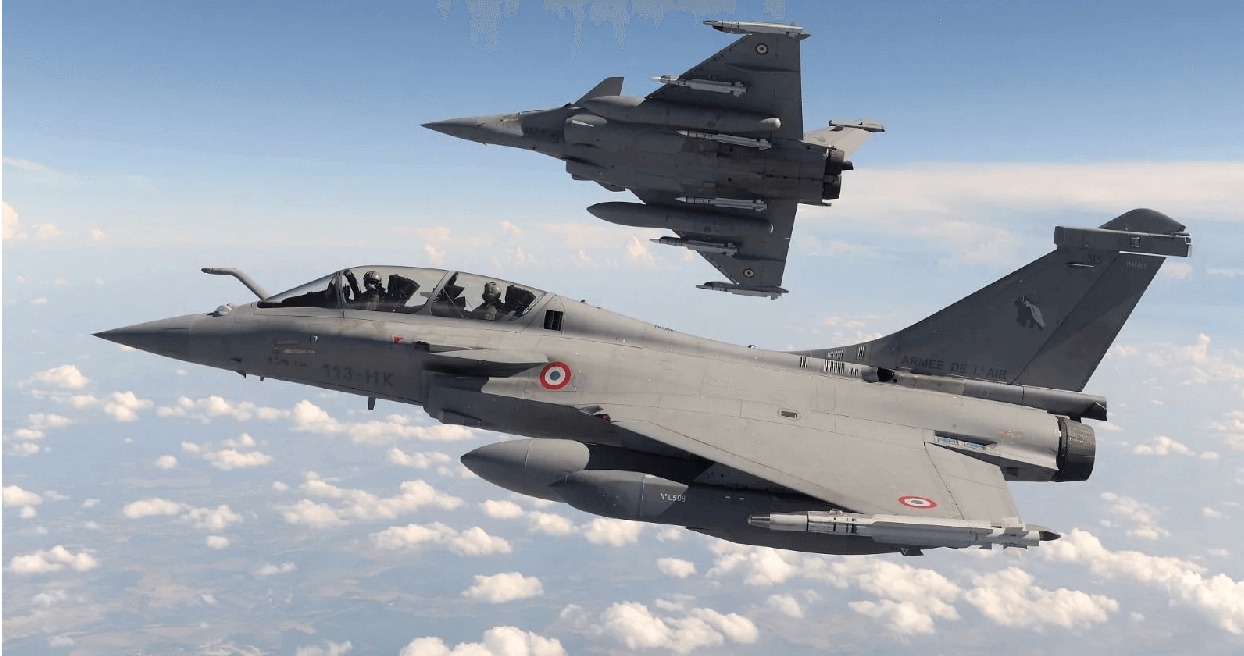To alleviate the operational strain on its MiG-29K fleet, the Indian Navy is considering the acquisition of 26 Rafale M fighter aircraft before 2030. Reports suggest that an official announcement regarding the acquisition may be made in the near future, with expectations that the contract signing will happen after the 2024 Lok Sabha elections
 KRC TIMES Desk
KRC TIMES Desk

Girish Linganna
At present, the Indian Navy is in possession of two aircraft carriers—the home grown INS Vikrant and Russian made INS Vikramaditya. The navy also has a fleet of 41 MiG-29K supersonic air dominance fighter jets of Russian origin, which it introduced into its fleet in 2010. While the MiG-29 has been sold to many countries, the MiG-29K Fulcrum D variant is exclusively operated by the Indian Navy.
However, due to significant concerns regarding the quality of their construction, the entire fleet of approximately 41 jets will be decommissioned from service starting in 2025. This decision comes despite the fact that the jets have been in service for fewer than 25 years. The jets have been plagued by build-quality problems, necessitating frequent inspections at regular intervals.
The MiG-29K was, initially, designed to last a 25-year lifespan and a maximum operating time of 6,000 hours. With the implementation of a life extension programme, these jets could have potentially served the Indian Navy for an additional 10-15 years. Unfortunately, it has been discovered that the navy has decided against any plans to extend the service life of the fleet. Instead, the entire fleet will be decommissioned and scrapped after retirement.
A Comptroller and Auditor-General (CAG) report highlighted that the fraction of the fleet’s aircraft that is in a condition fit for operation ranged from 21.3% to 47.14%. This fact points to a substantial part of the fleet’s aircraft being non-operational due to a variety of problems, or malfunctions. Around 40 engines had to be withdrawn due to design defects attributed to poor quality from the Russian Military Complex.
The Replacement: The Indian Navy plans to replace the fleet with 45 Twin Engine Deck-Based Fighters (TEDBF) from 2035 onwards. However, there are concerns that the current fleet may not be able to last beyond 2030 due to airframe defects, discrepancies and anomalies that could pose safety risks as the aircraft age.
To alleviate the operational strain on its MiG-29K fleet, the Indian Navy is considering the acquisition of 26 Rafale M fighter aircraft before 2030. Reports suggest that an official announcement regarding the acquisition may be made in the near future, with expectations that the contract signing will happen after the 2024 Lok Sabha elections.
The MiG-29K Fulcrum D, a twin-engine, multi-role naval fighter launched by the Russian Navy in 2010, is uniquely adapted for deck-based operations. The ‘K’ in MiG-29K signifies ‘Korabelnogo Bazirovaniya’, which translates to ‘deck-based’. This label emphasizes the aircraft’s role as a naval interceptor and sets it apart within the extensive MiG-29 family, which encompasses over 1,500 planes of various models. The MiG-29 was developed as an air superiority fighter jet, intended to counter the US F-14 Tomcat.
The MiG-29K, also known by its NATO designation, Fulcrum D, is a naval fighter jet featuring two engines designed for a single pilot and capable of fulfilling multiple roles. Despite its advanced features, it is predominantly operated by the Indian Navy. Around 20 of these aircraft are now operational. The absence of an aircraft carrier for deployment has rendered the MiG-29K Fulcrum D mostly unnecessary for the Russian Navy.
The MiG-29K Anatomy: The MiG-29K Fulcrum D is powered by twin RD-33MK engines, enabling it to achieve top speeds of Mach 2 (approximately 1,500 miles per hour) when flying at high altitudes and about 900 miles per hour at lower altitudes. For defence, the MiG-29K is equipped with a radar-absorbing coating and electronic warfare systems, enhancing its survivability in contemporary air combat scenarios.
The MiG-29K Fulcrum D has eight hardpoints capable of carrying nearly 10,000 lbs (roughly 4,536 kg) of weaponry, including a wide array of munitions for air-to-air, air-to-ground and anti-ship missions. Its naval interceptors are equipped to carry a variety of weapons, including Vympel NPO R-77 long-range missiles with active radar guidance; Vympel R-73 short-range, heat-seeking missiles; R-27 missiles guided by radar for air-to-air combat; Kh-31 supersonic and Kh-35 subsonic missiles for targeting ships; alongside glide bombs and standard bombs.
The selection of the MiG-29K was influenced by the Indian Air Force’s (IAF’s) extensive experience with the aircraft. Since the late-1980s, the IAF has operated around 60 MiG-29A units, which were later upgraded to the UPG variant. India’s decision was also influenced by its status as the second customer to introduce this type of aircraft, following the Soviet Air Force.






